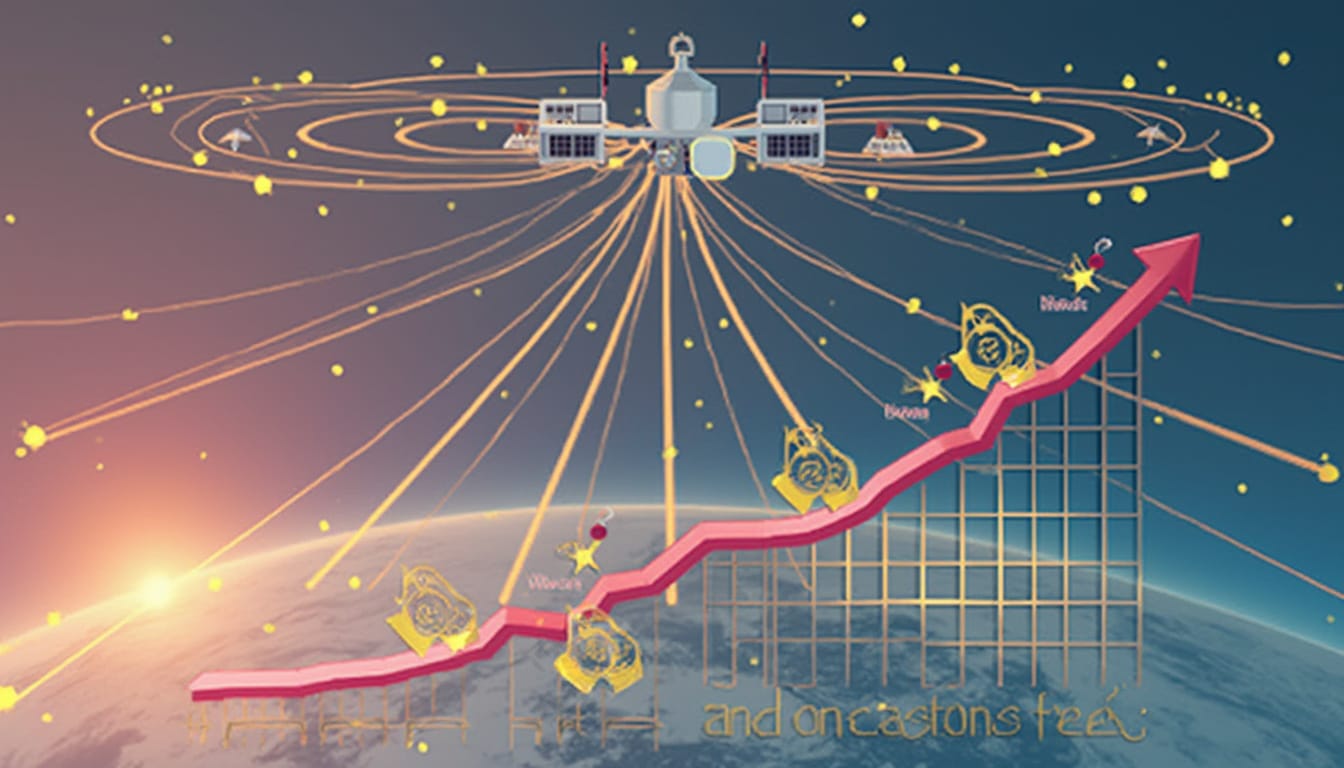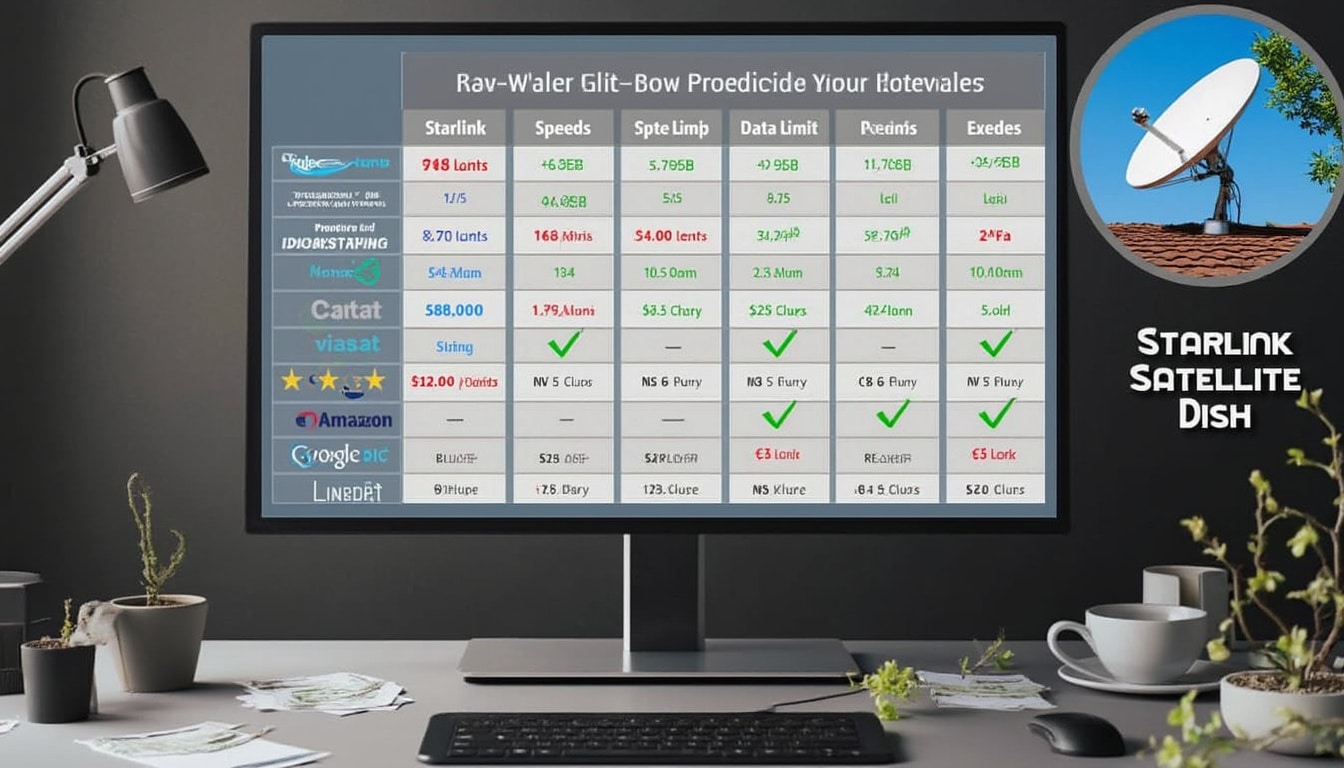The realm of telecommunications is experiencing significant shifts, particularly as companies like SpaceX innovate and expand their services. Recently, SpaceX announced an increase in congestion fees for Starlink users across various US locations. This change has raised eyebrows among existing customers, many of whom depend on the satellite internet service to stay connected. As broadband demand continues to surge, understanding the implications of these congestion charges and the overall impact on Starlink’s service becomes essential.
With the rapid growth of satellite technology, SpaceX’s Starlink has emerged as a leading player in the broadband market. Its performance and reliability are pivotal in regions traditionally underserved by traditional internet services. However, the increased congestion fees now necessitate a closer examination of the factors influencing these charges and the future landscape of satellite internet.
Understanding Congestion Fees and Their Impact on Starlink Users
Congestion fees are designed to manage network traffic and ensure optimal service for all users. For Starlink, which operates through a constellation of satellites in low Earth orbit, these fees become particularly crucial in regions with high demand.

The Mechanics of Starlink’s Congestion Fees
Starlink’s congestion fees apply primarily during peak usage times when demand for satellite bandwidth surges. This phenomenon can particularly affect urban regions where broadband usage is at its highest. By implementing these fees, SpaceX aims to incentivize users to shift their internet usage patterns, potentially easing congestion during peak hours.
In addition to the congestion fees, the cost structure for Starlink users varies. A recent study shows that some users have reported significant increases in their monthly bills, leading to concerns about affordability and the sustainability of using the service. The shifts in pricing models can significantly influence customer satisfaction and affect initial perceptions about satellite internet’s value proposition.
Regional Variations in Congestion Fees
The congestion fees are not uniformly applied across the country. SpaceX has identified areas with varying levels of demand and competition. For example, major urban centers may see more aggressive fee structures due to higher user density, while rural areas may experience fewer charges. This variability creates a complex landscape for potential Starlink users, where understanding local conditions will be essential for making informed decisions.
Factors Driving the Increase in Congestion Fees
Several factors contribute to the decision by SpaceX to enhance congestion fees for Starlink users. As the company continues to expand its satellite constellation, it faces increasing demand from users who require high-speed internet access in remote areas. This growing audience presents both challenges and opportunities for SpaceX’s ongoing operations.

Growing Demand for Satellite Internet
The need for robust broadband services has intensified, especially since the pandemic forced many people to work and learn from home. In areas where traditional internet options are limited or non-existent, Starlink provides a welcomed alternative. This surge in demand inevitably stresses the existing satellite infrastructure, prompting SpaceX to consider adjustments to their pricing strategy.
As countless individuals, businesses, and educational institutions turn to satellite internet, the demand creates a pressure-cooker environment regarding bandwidth availability. Consequently, congestion fees reflect an effort to balance network resources better, ensuring that users have continuous access, even during peak times.
Technological Advancements and Their Role
SpaceX’s investments in technology also play a crucial role in shaping the nature of congestion fees. Continuous upgrades to its satellite technology can enhance service delivery but may necessitate increased operational costs. The need to maintain a cutting-edge network often leads companies, including SpaceX, to implement fee structures that can help offset these expenses and ensure the viability of their services.
Furthermore, enhancements in satellite communication technology aim to improve data speeds, reduce latency, and broaden service areas. However, these advancements require substantial capital, further emphasizing the need for effective pricing strategies like congestion fees.
Customer Reactions and Future Implications
As users learn about the increased congestion fees, reactions have varied widely. Many customers report frustration over the additional costs; others express concern regarding the overall direction of Starlink’s pricing structure. These sentiments highlight the importance of transparency and communication from SpaceX, ensuring that users understand the rationale behind the changes.
User Experiences and Feedback
Customer experiences often shape the narrative surrounding services like Starlink. An analysis of user feedback points toward mixed emotions—while many praise the accessibility provided by satellite internet, others feel that price increases may complicate their reliance on Starlink for critical services. Building trust through consistent service, effective communication, and responsive customer support is vital.
Many customers also stress the need for more information regarding how congestion fees are calculated. Providing clarity can not only enhance users’ experiences but also foster a sense of loyalty among customers who appreciate transparency in handling their accounts.
Future of Satellite Internet Services
Looking ahead, the satellite internet landscape is shifting. Companies like SpaceX must navigate customer concerns alongside technological advancements and growing competition. As corporations increasingly vie for market share in the telecommunications arena, understanding both user needs and operational costs will remain critical.
With alternatives such as Amazon’s Project Kuiper on the horizon, the stakes are high. This growing competition may also influence pricing strategies, potentially easing congestion fees or leading to other innovative solutions for customers. As Starlink continues to shape the future of satellite internet, the convergence of technology, pricing, and customer engagement will forge the path ahead.
Alternatives and Competitive Landscape
The landscape of satellite internet is not solely represented by SpaceX. Various competitors are emerging, providing consumers with options, and potentially influencing market dynamics regarding pricing and service quality.

Understanding Competing Services
Recent developments, such as Amazon’s Project Kuiper, illustrate how competition in the satellite internet industry is intensifying. This initiative aims to deliver similar broadband services and could potentially alter consumer expectations regarding service delivery and pricing. The launch of competing services will necessitate constant innovation and improvements within SpaceX, compelling them to reconsider their strategies in response to competitive pressures.
For consumers, the diversification of options is promising, as it may lead to better service quality, innovative pricing models, and a broader range of choices tailored to specific needs. Reviewing the competitive landscape can equip users with insights regarding which service best fits their requirements, particularly in relation to pricing structures such as congestion fees.
A User Guide to Choosing the Right Service
When navigating the satellite internet market, understanding the unique offerings and pricing structures of various providers is critical. Starlink’s reliability and coverage may entice many users, but alternatives like Amazon’s Project Kuiper or traditional broadband services may sometimes provide more cost-effective solutions.
- Evaluate service availability in your area.
- Examine pricing structures, especially regarding congestion fees.
- Consider customer reviews and performance ratings.
- Explore contract terms and flexibility.
- Investigate promotional offers or discounts for new users.
Making informed decisions will enable users to select satellite internet services that align with their preferences and budget while acknowledging the evolving landscape of telecommunications.




Leave a Reply